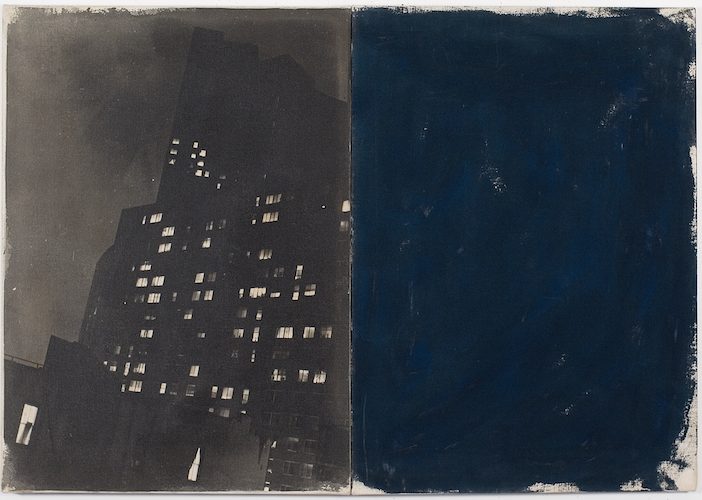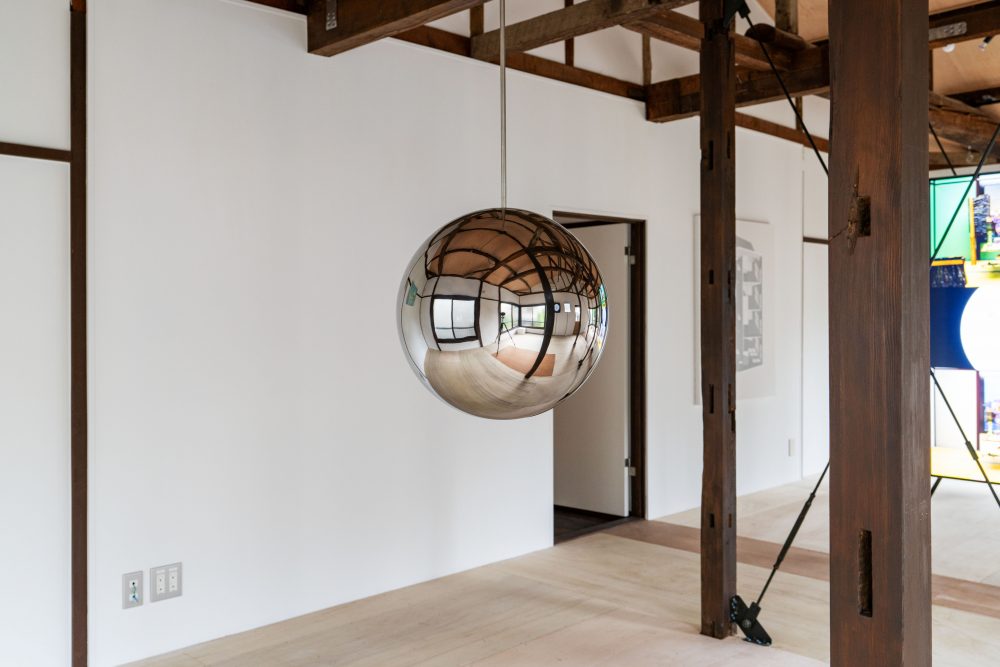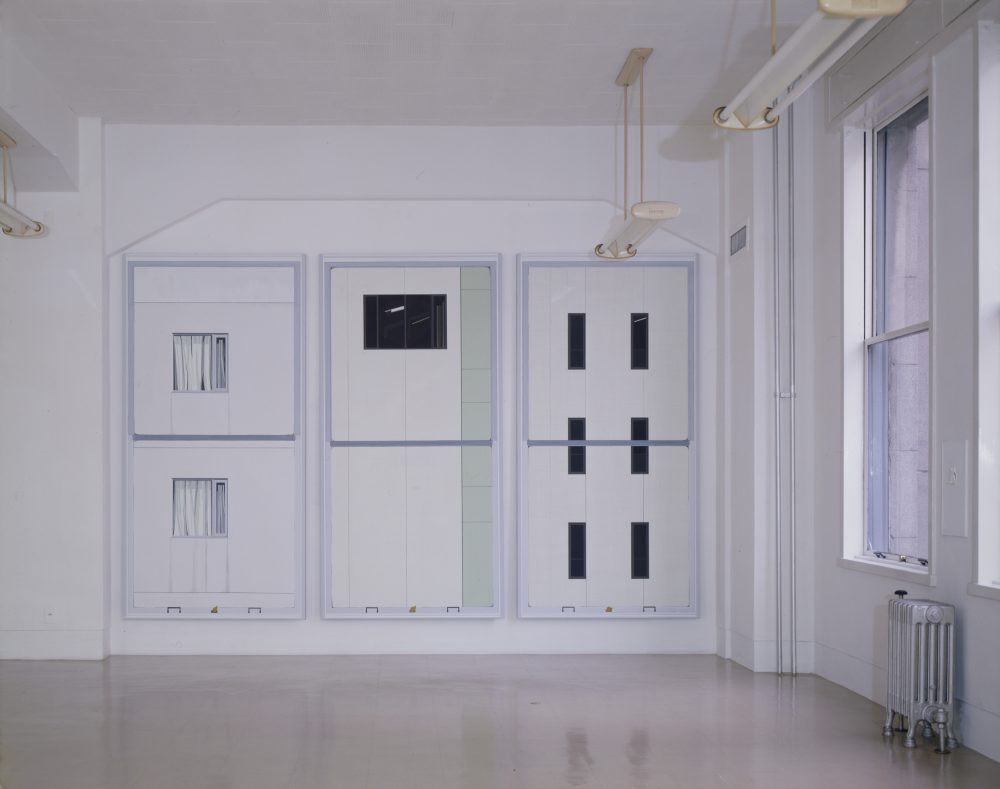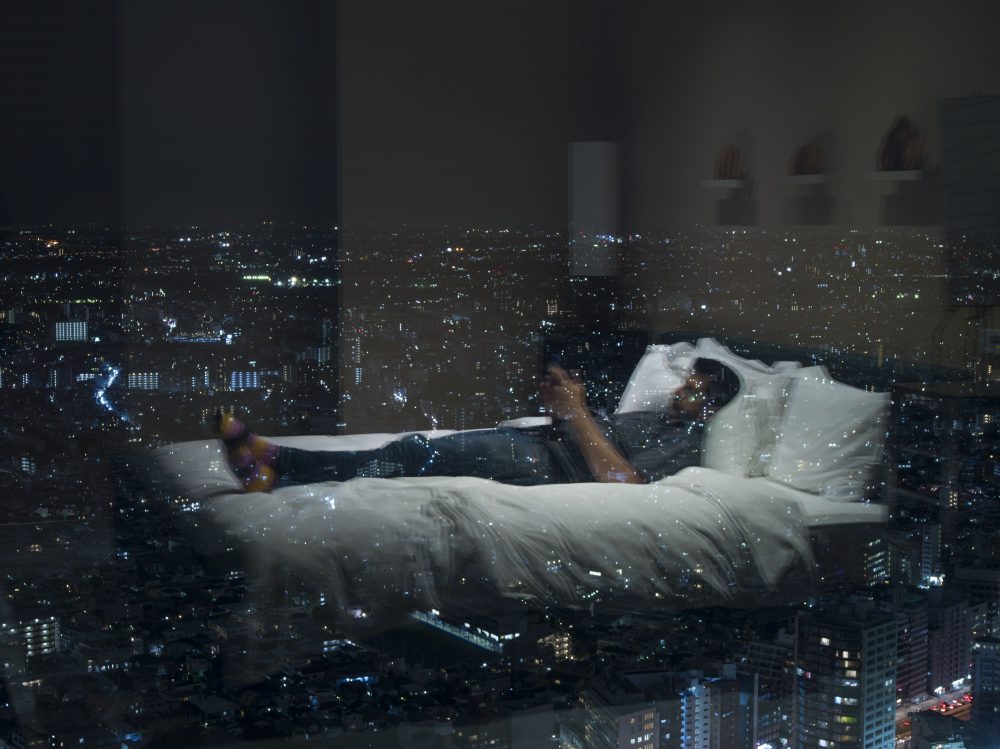Kunié Sugiura – My Window
02 Mar 2023
- Keywords
- Art
- Columns
- Photography
A window is a structure that lets light into a room and provides a view of the outside world, but when windows appear in photographs, they are often there to serve as a background or explanation for the subject. For example, in works like Robert Frank’s THE AMERICANS, where passengers of all races are seen through the windows of a railway train in New Orleans, or in August Sander’s work depicting a child actor gazing out of a circus caravan, though the focus remains on the person in the photograph, the window supports the composition. Eugène Atget and Lee Friedlander took many photographs of show windows that I felt conveyed a sense of narrative surrounding the window, rather than the store itself. A picture that remains unforgettable to me is the news photo of people jumping out of the high windows of the World Trade Center on 9/11.
Windows appear often in sculpture and painting as well; I’ve seen many works like that so far. In James Turrell’s work Meeting at the MoMA PS1, a square window in the ceiling opens up at certain times to reveal the vivid blue sky on a clear day, interrupted by the occasional tiny airplane or seagull; when it turns to night, it reveals the starry sky. Marcel Duchamp’s Large Glass can also be considered a large glass window. Another work by Duchamp, Fresh Widow, a clever play on the phrase “French window”, is a common double window, is also quite tasteful. Shigeko Kubota’s Meta-Marcel: Window (Three tapes), which transformed television static noise into snow, was an interesting cross between window and TV. And when I went to Georgia O’Keeffe’s Santa Fe studio, I remember that there was a floor-to-ceiling window that opened up to a wonderful 180-degree panoramic view of the distant, encroaching mountains.
If my life were a building, its window would be my move from Chicago to New York City. My window exists as a metaphor. But rather than make you listen to me, who has never studied architecture, go into detail about windows, I would like to write about my experiences in New York instead, since I’ve been living here for 50 years now. There may be something I can pass on to the young people from “my window.”
When I came to New York as a student, I felt that everyone in the city was very self-aware, and I felt as if I was tasting hope and freedom. The Museum of Modern Art and the Metropolitan Museum of Art in New York were packed with artworks I had seen before in textbooks, and I was confronted with their raw power, enraptured by the high quality of the works.
So, right after graduating from the Chicago Art Institute in 1967, my classmate Molly Ryan and I decided to rent an apartment just for the summer, and that’s how we came to New York City.
I would go meet the people I was introduced to with my work in tow. This included people like Richard Avedon, who would tell me: “I’m having a hard time getting work, so I can’t hire you,” and then they would introduce me to another person, who would introduce me to another person, and so on and so forth. But the people who agreed to meet me took the time to truly look at my work, not caring whether I could speak English (which I of course could not), and I felt that they were all just genuinely trying to think of ways they could support me. Although this was in the days when there were newspaper articles about how in the South the police were escorting black students to school, my school had black students, and in fact the ones in my class were very popular for their good sense of humor. In my experience, though I felt that it was of course necessary to put in the effort to overcome the fear of rejection and to keep trying again and again, I also felt that New York was a fair place that would give you back as much as you put in.
I eventually settled into an assistant role to fashion photographer Ed Latoux, who had a studio around 30th Street in Manhattan. At the time, you had to spend about $1.50 just to get in for lunch, so I would kill time by strolling around and thinking about how Hemingway wrote that when he was young, he could see the art in the Louvre better if he went on an empty stomach.
As for my own work, I came up with the idea to try creating paintings from photographs. I tried taking close-up photographs of trees, rocks, gravel, flowers, and such at parks and beaches. I coated canvases with photosensitizer and printed photographs onto them in a darkroom, and I would use pencil or acrylic to make the areas lacking contrast darker, and I played around with a lot of other colors as well. In 1971, I completed a series called “Photocanvas,” and when I showed the slides of the finished works at various venues, John Szarkowski from the Museum of Modern Art in New York (and the famous curator of the “Mirrors and Windows” exhibition) ended up coming to my apartment, and he viewed my work and said with great enthusiasm, “Let’s have an exhibition.” After one year of no contact, one day I went to see a film at the MoMA and I ran into him, so I asked him, “What about my exhibition?” To which he replied, “Ah, unfortunately we couldn’t get the budget.” Looking back, he had indeed said to me, “Let’s have your exhibition if we can secure a budget,” but I had completely forgotten that part of his comment, and had been waiting for him to contact me!
However, in that same year of 1971, Marcia Tucker, the curator of the Whitney Museum of American Art, called me out of the blue (perhaps on someone’s recommendation?) and offered me a place in the 1972 Annual Exhibition, a show that is considered a gateway to success for upcoming artists.
From then on, my artwork production did not go smoothly, and the painting portion of my works increased more and more until finally I skipped photography entirely and only painted for a few years, but to reset this situation, I moved to a loft in Chinatown, which is the one where I still currently live.
This time, I left the “Photocanvas” behind and came up with the idea to create panels that juxtaposed photo and painting. The painting area beside the photo was a two-dimensional monochromatic color. The idea was that if the viewer could view the photograph and the colors at the same time, they would absorb them simultaneously, and the two would mix in their mind. I also tried to take pictures of everyday images that were easily accessible, rather than abstract or close-up photography. There was wood lying around in my studio, so I added it around the canvas, which gave it a sculptural element, and I felt that my work evolved a great deal at once.
As a result, I think the “photo + painting” series of the 1970s was not a reflection of the big city’s glamour or its fierce competition for survival, but rather something personal, isolated, and even nihilistic.
The wooden frames in the windows of my loft are old now and none of them open anymore, but the wind still comes in through the cracks, so they are covered with plastic. The work “Confucious Plaza” (1977), which accompanies this article as an illustration, is a photo of a nearby high-rise apartment building when my windows still functioned as windows.
-

Confucius Plaza
1977
28”x40” (71.1 x 101.6 cm)
Photographic emulsion, acrylic on canvas
Kunié Sugiura
Kunié Sugiura was born in Nagoya and currently lives and works in New York. She received her BFA from the School of the Art Institute of Chicago (SAIC) in 1967. At SAIC, Sugiura studied under the conceptual photographer Kenneth Josephson; after almost 50 years, she continues to explore a diverse range of photographic expression. After experimenting with color photography in the 60s and combining acrylic paint with photography on canvas in the 70s, Sugiura began producing photograms with objects from everyday life in the 80s. While pursuing connections between photography and other media, she has also been interested in photography’s materiality, and the way that this materiality can be made abstract. Through her works, she captures light, time, the transience of nature and its memory. The result is an almost contradictory work that harnesses tensions between the concrete and the abstract, while also standing between the improvised and the constructed. Sugiura’s major solo exhibitions include “Time Emit”, Visual Arts Center of New Jersey, Summit, New Jersey (2008) and “Dark Matters / Light Affairs”, The University of California, Davis (2001). She has received the Higashikawa Prize (2007) and the Artist’s Fellowship, New York Foundation for the Arts (1998). Her works are included in the permanent collections of the Denver Art Museum; The Museum of Fine Arts, Boston; The Museum of Modern Art, New York; and the Tokyo Metropolitan Museum of Photography.










